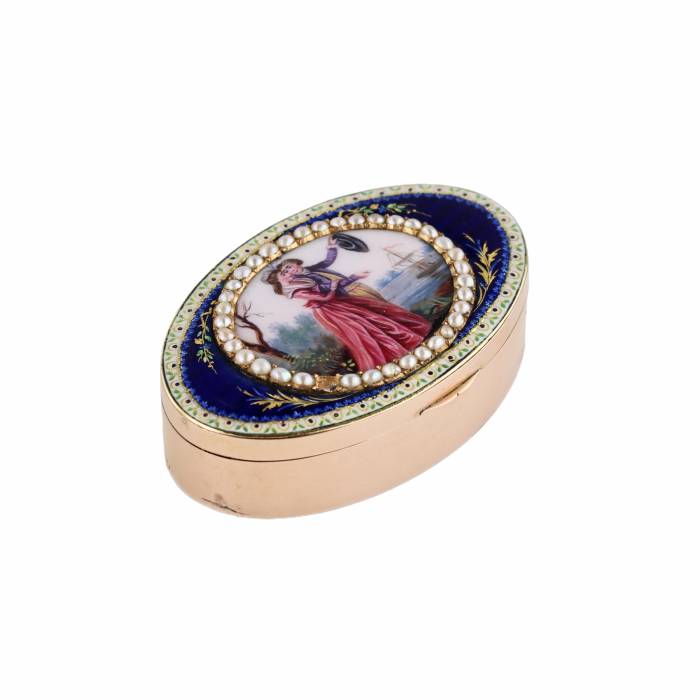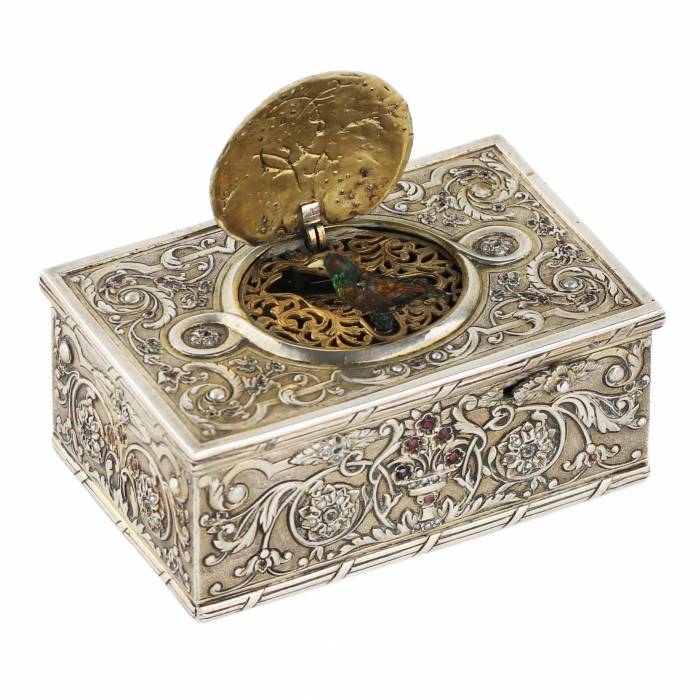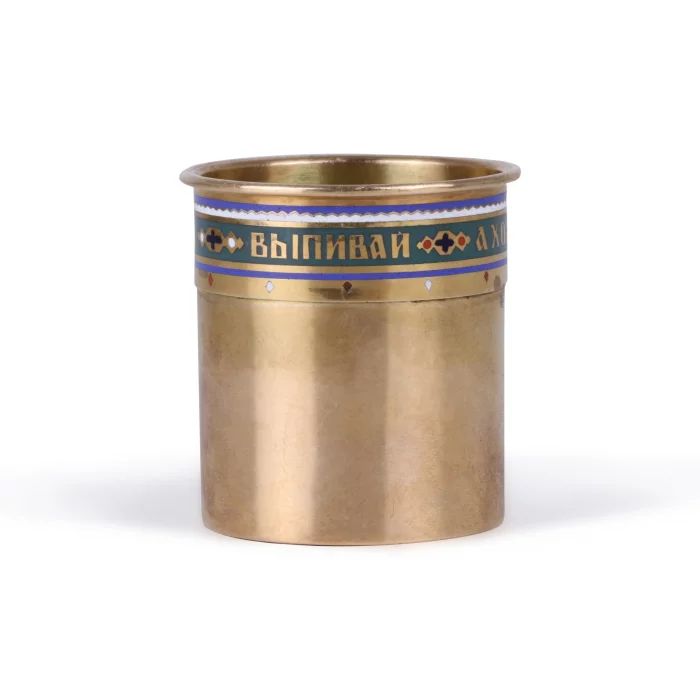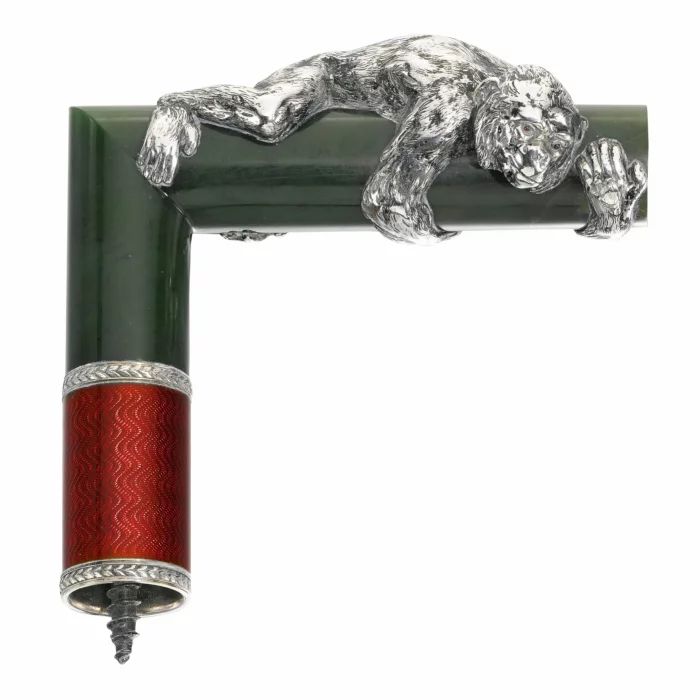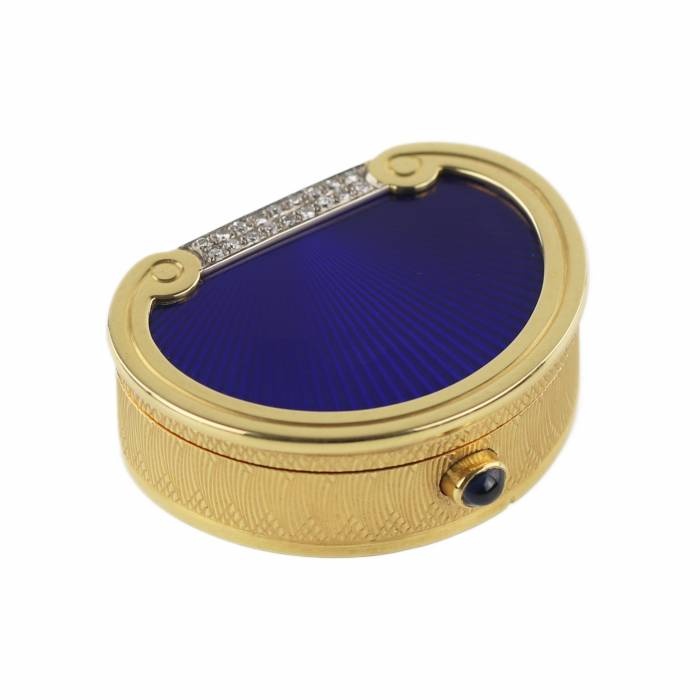Presented here is an exceptionally rare and refined desk barometer, executed in the Empire style (with garland and laurel motifs), created by the esteemed Saint Petersburg master Viktor Aarne for the House of Carl Fabergé, Imperial Court Supplier, between 1899 and 1904. The barometer is crafted in high-grade silver (88 zolotniks) and rests on three finely cast silver feet. The body is adorned with rich, ruby red guilloché enamel over a wave-patterned ground.The circular dial is set beneath a faceted glass cover, bordered by a classical silver laurel band. The face is finished in white opaque enamel, inscribed in Russian with weather indications: Storm, Rain, Change, Fair, Very Dry. The attention to detail and harmony of proportions mark this as a piece of imperial-level decorative art.Hallmarks and Provenance:On the underside, the following clear hallmarks are present:The Fabergé firm’s mark in Cyrillic («ФАБЕРЖЕ»),Master’s mark “ВА” for Viktor Aarne,Saint Petersburg assay office mark (1899–1904) with 88 for silver purity,Assayer’s initials “ЯЛ” for Yakov Lyapunov.Historical Background:Viktor Aarne (1863–1934) was one of Fabergé’s most celebrated silversmiths, known for his mastery in silver and enamel work. From 1888 he operated a workshop exclusively producing for Fabergé. His works are highly regarded for their precision, elegance, and exceptional enamel techniques.Barometers by Fabergé are extremely rare — only a handful are known. Eight silver barometers were made for the Cabinet of His Imperial Majesty, of which only two were ever presented as Imperial gifts.Specifications:Height: 6.3 cmDiameter (base): 11.5 cmDiameter (top): 8.5 cmMaterials: Silver (88 zolotniks 916 standard), ruby guilloché enamel, white opaque enamel, faceted glassCondition: Excellent, with minor signs of age-consistent wearArt-Historical Value:This barometer is fully authenticated by Valentin Skurlov, Honorary Member of the Russian Academy of Arts, recognized Fabergé scholar, and expert for the Ministry of Culture of the Russian Federation and Christie’s.It is an original Fabergé work, notable for its use of high sterling-grade silver, rich enamel color, and rare typology. Owing to its imperial provenance, flawless execution, and rarity, it ranks among the top-tier collectible artworks, suitable for both museum and prestigious private collections.
Gifts:
Cabinet, Gifts for a gentleman
The condition report is provided for informational purposes only.
It is not comprehensive and may not reflect all defects, restorations, alterations, or adaptations, as Antiqon does not perform professional conservation-level assessments. The information is based on a qualified, yet subjective, evaluation by our specialists.Before purchasing, we recommend consultation with an independent expert.Please also consult our Terms and conditions and Glossary A-Z, which contain important information on lot characteristics and sale conditions.












